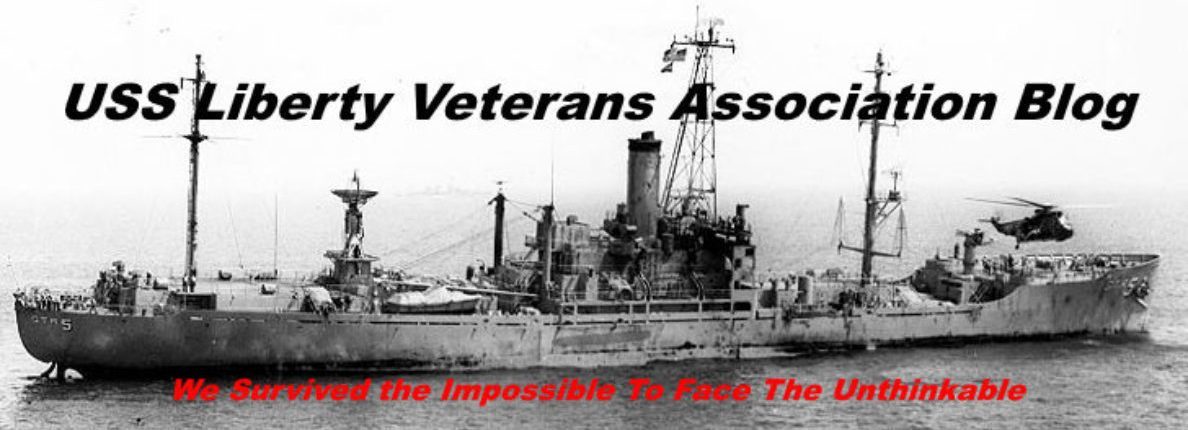Over the years, various pieces of evidence have emerged that seem to support Israel’s claim that the USS Liberty was fired on by mistake in 1967. However, a number of questions still hover over the affair, and these nourish the conspiracy theories.
by Tom Segev Feb. 17, 2012 Updated: Feb. 19, 2012
[Editor’s Note: This is an annotated version of Tom Segev’s article at https://www.haaretz.com/1.5187283.
Mr. Segev is a noted Israeli historian that, like many Israel partisans, has a blind eye toward everything USS Liberty that presents itself in poorly researched articles such as the one offered here.
Once the US government investigates the attack Mr. Segev will be able to write a more substantive and honest article about the attack on our ship.]
On June 8, 1967, Israeli air force planes and navy boats attacked the American spy ship USS Liberty in the waters opposite El Arish. Thirty-four crewmen were killed and 171 were wounded. Israel immediately claimed that the ship had been attacked by mistake1 and apologized. At the end of tough negotiations the Americans agreed to accept about $7 million from Israel in compensation.2
What are your thoughts on this issue? Follow Haaretz.com on Facebook and share your views.

The affair was enveloped in deep secrecy, which was lifted gradually only many years later. As a consequence, the impression was created that Israel and the United States were hiding the real story.3 In the nature of things, innumerable conspiracy theories were born. In the meantime the Internet developed: Today Google directs to more than a million sites dealing with the affair.
There is no proof that Israel attacked the ship maliciously.4 No motive for this has been proven.5 None of the four people who could have ordered an attack on an American ship – Prime Minister Levi Eshkol, Mossad chief Meir Amit, Defense Minister Moshe Dayan and Chief of Staff Yitzhak Rabin – was daring and crazy to that extent. Over the years, various pieces of evidence have emerged that seem to support Israel’s claim that the ship was fired on by mistake. However, a number of questions still hover over the affair,6 and these nourish the conspiracy theories.
The affair is also the subject of the doctoral thesis that Orna Katz-Atar submitted to Bar-Ilan University, as well as an article she has published in the latest issue of the Hebrew journal Cathedra. She concentrates on the sources of the claim that Israel bombarded the ship maliciously.7 According to her, U.S. President Lyndon B. Johnson himself and a number of top officials in his administration were responsible for spreading that version of events. They did this in part to prove to the Arab countries that the United States was not a partner to Israel’s victory in the Six-Day War, which was still raging as the incident took place, and to neutralize the pressure American Jews were applying on the White House.
Katz-Atar’s conclusion: “The conduct of the White House in this incident could have been a transient episode had it not served top people in the American administration, [who were] anti-Israeli and even anti-Semitic.8 However, since the plot concocted by the administration served the interests of all of these – it has grown to this day.”
President Johnson, Central Intelligence Agency head Richard Helms, Secretary of State Dean Rusk and the heads of the Defense Department indeed did not believe Israel’s version – or at least they could not let go of the suspicion that the ship was attacked intentionally. The first Israeli investigation, which was conducted immediately after the incident, gave reason to suspect that Israel was trying to whitewash the truth. In accordance with the Americans’ demand, a second investigation was conducted.
Contrary to Katz-Atar’s thesis, there are documents that indicate that the Americans were inclined to bury the incident as quickly as possible. Her article is published under the Hebrew title “The Affair of the Sinking of the American Naval Ship USS Liberty – the Development of a Plot.” In the English summary of the article, the word is “Myth” rather than “Plot.” In any case, the ship did not sink. It sailed to Malta, where it was repaired.
The big dispute centers on the question of whether the air force pilots saw the American flag flown by the ship.9 Israel claims they did not. Later, Israeli navy vessels arrived at the scene. One of them signaled the Liberty and asked it to identify itself. The Liberty replied in code meaning “Identify yourself first.”10
If we are to accept Katz-Atar’s version, the Israeli navy ship was apparently manned by an historian – or at any rate by someone who knew that the message “Identify yourself first” had also been dispatched from an Egyptian destroyer, the Ibrahim al Awwal, which attempted to bombard Haifa in 1956. “This fact was well known in the navy,” writes Katz-Atar.
The commander of the Israeli naval force immediately referred to the “Arab Naval Fleets Identification Book” and for some reason decided that the Liberty was the Egyptian supply ship Al Kassir. In the meantime the Liberty fired at the Israeli navy ship,11 which fired back at the Liberty. Ten minutes later someone on the Israeli ship descried the Liberty’s identification letters, which, according to Katz-Atar, the air force plane had already seen half an hour earlier. The navy decided for some reason that the Liberty was not Al Kassir but rather in fact a Russian ship. Katz-Atar does not say how they reached that conclusion.
This goes to show there is no need to be an anti-Semite in order to wonder how it could be possible for so many Israeli officers and soldiers to behave with such great stupidity – and all of them at the same time.12
